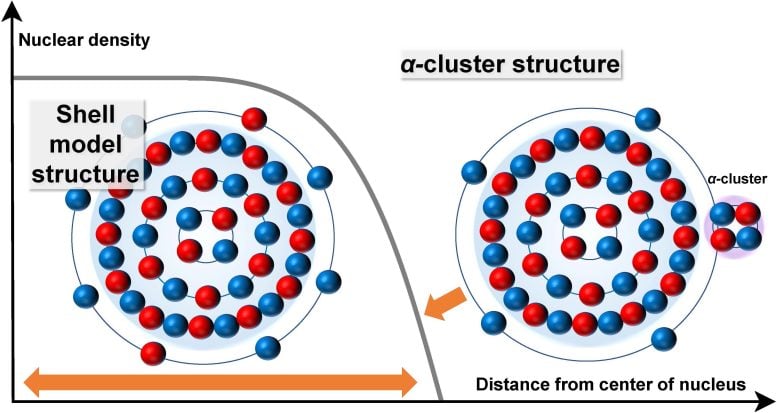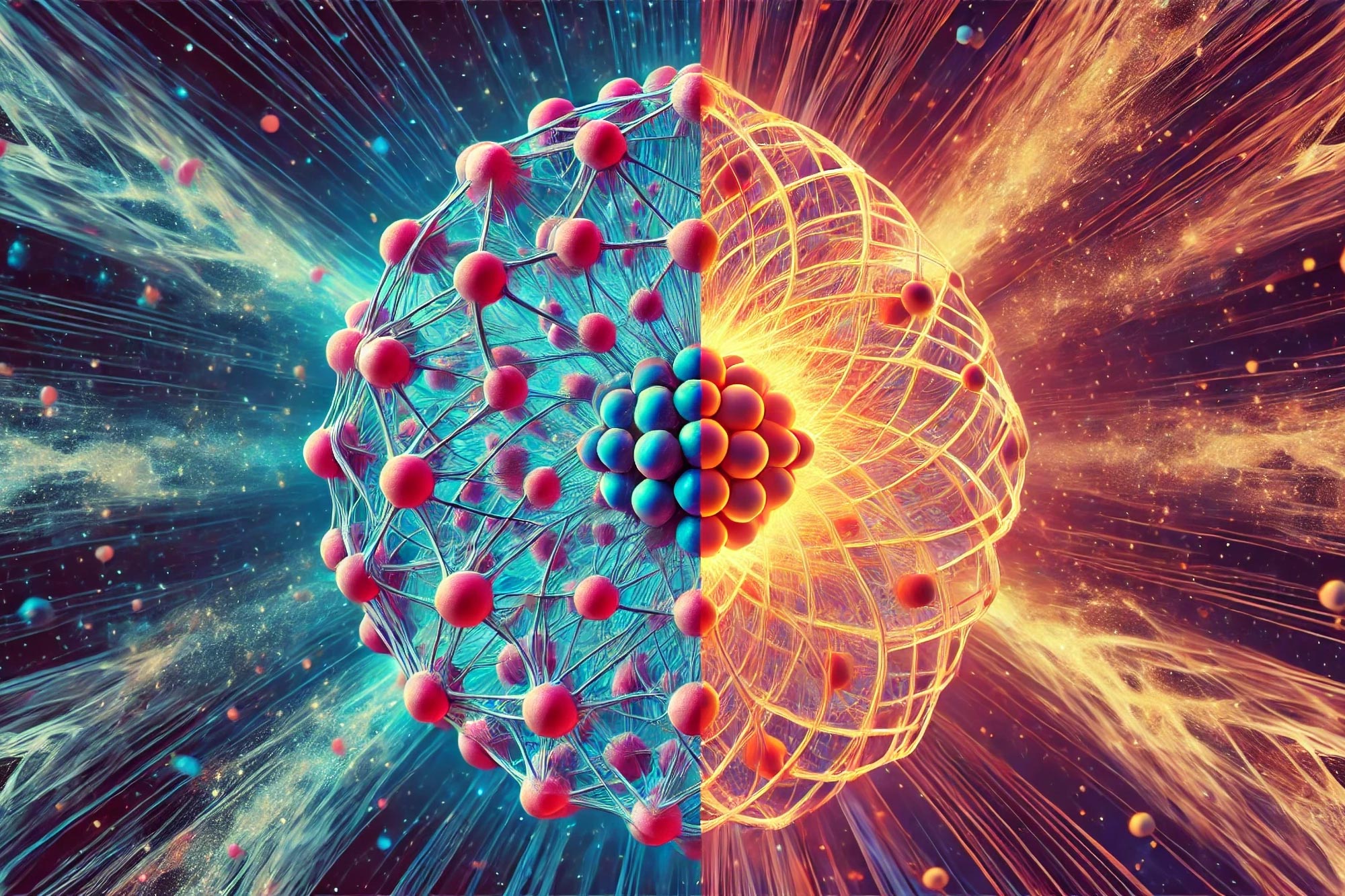Researchers at Osaka Metropolitan University discovered that the nuclear structure of titanium-48 varies with distance from the nucleus’s center, shifting between shell and α-cluster structures. This finding challenges traditional views on nuclear configuration and may provide insights into α-decay processes in heavy nuclei, a puzzle in nuclear physics for nearly a century. Credit: SciTechDaily.com
A 100-year-old physics mystery may be close to being solved as new research reveals structural changes in titanium-48’s nucleus.
The world around us is made up of particles invisible to the naked eye, but physicists continue to gain insights into this mysterious realm. Findings published in the journal Physical Review C by Osaka Metropolitan University (OMU) scientists show that the nuclear structure of an 
The nuclear structure of titanium-48 changes from a shell model structure to an α-cluster structure based on the distance from the center of the nucleus. Credit: Osaka Metropolitan University
Alpha Clusters and Nuclear Asymmetry
While shell models are symmetric, α-cluster structures are thought to have an alpha particle at the outer region of the nucleus, making an asymmetrical configuration. An α-particle is the same as helium with 2 protons and 2 neutrons. In alpha decay, this particle is emitted; for example, titanium-48 becomes calcium-44 if such decay occurs.
The OMU team calculated the collision effect of high-energy accelerated protons and α-particles on titanium-48. This was based on a theory of nuclear reactions in which the impact of protons on a nucleus reflects the structure near the surface of the target nucleus, while the collision of α-particles on a nucleus reflects the structure of the outer regions.
Challenging Conventional Nuclear Theory
The results suggest that titanium-48 changes from a shell model structure to an α-cluster structure depending on the distance from the center of the nucleus.
“These results upend the conventional understanding of nuclear structure and can be expected to provide clues to the α-decay process that occurs in heavy nuclei, which has not been solved for nearly 100 years,” Professor Horiuchi enthused, referring to the Gamow theory on nuclear decay. “In the future, we would like to extend the results obtained through this research to take on the challenge of solving issues related to heavier nuclei.”
Reference: “Shell-cluster transition in 48Ti” by M. Okada, W. Horiuchi and N. Itagaki, 24 May 2024, Physical Review C.
DOI: 10.1103/PhysRevC.109.054324





















Discussion about this post